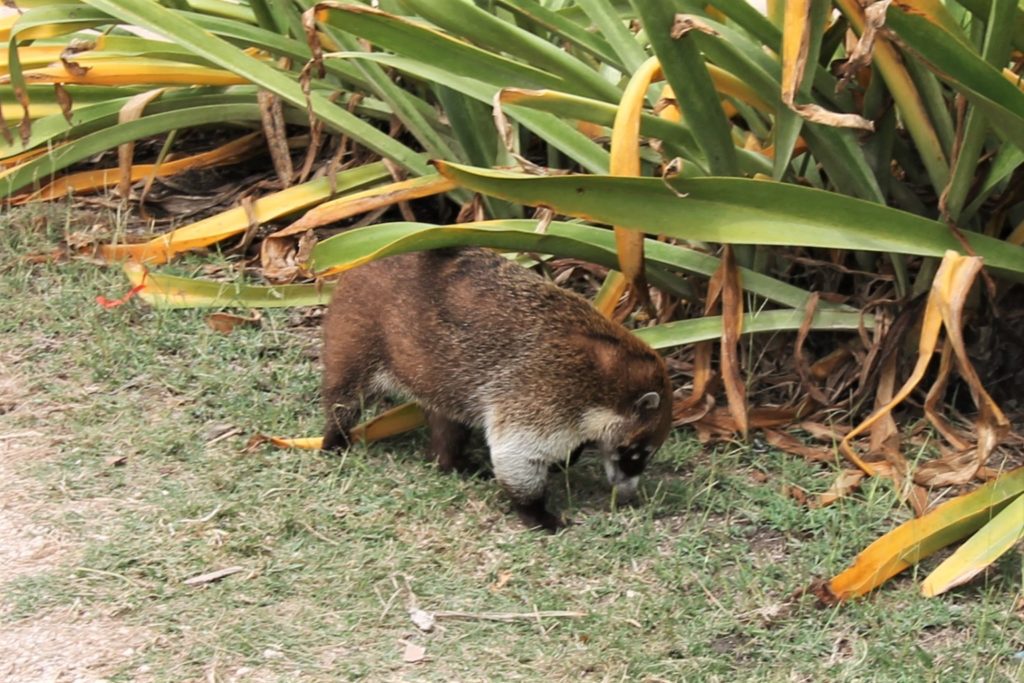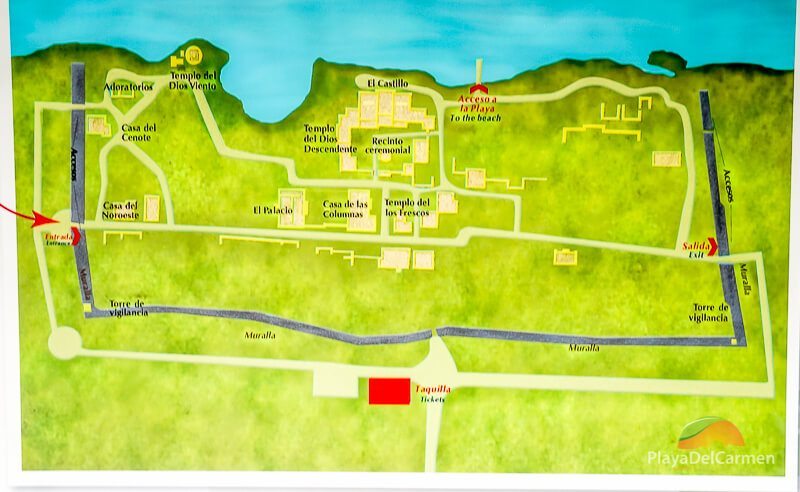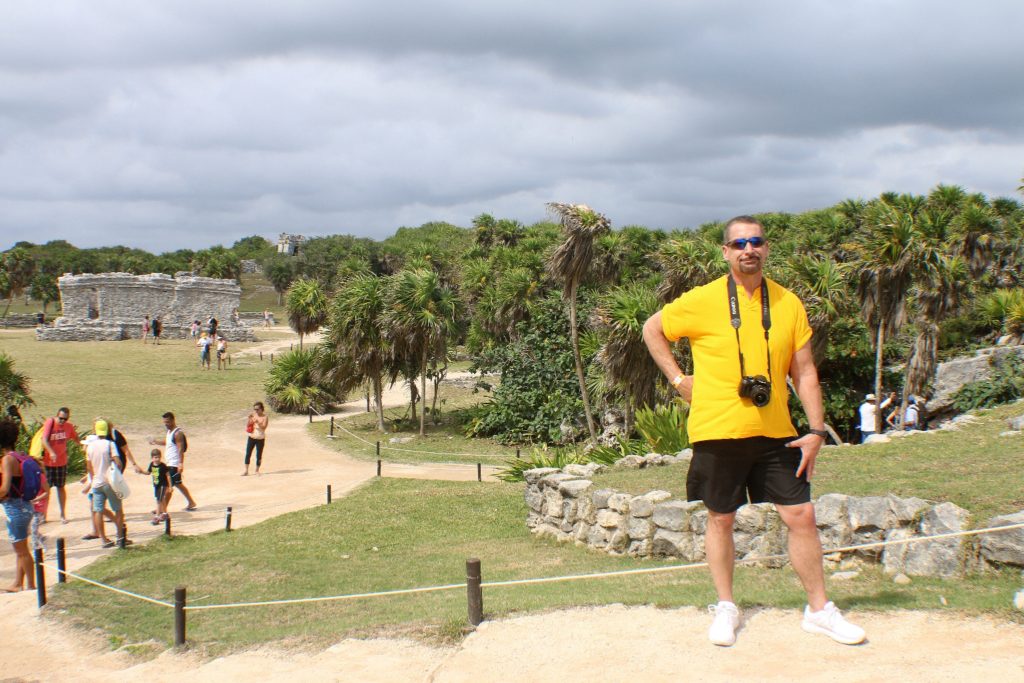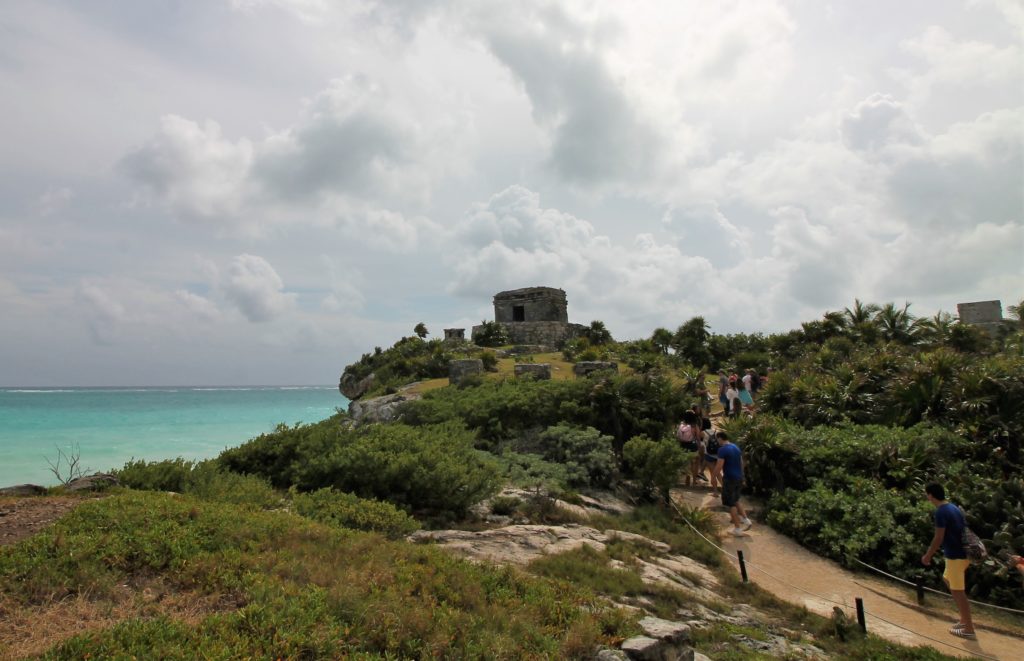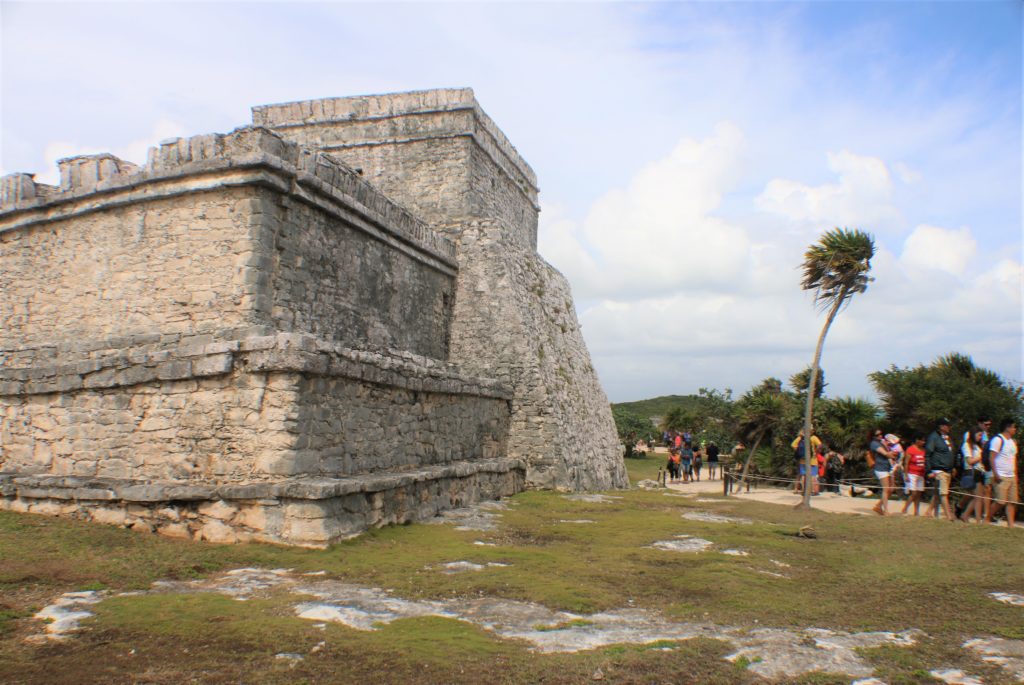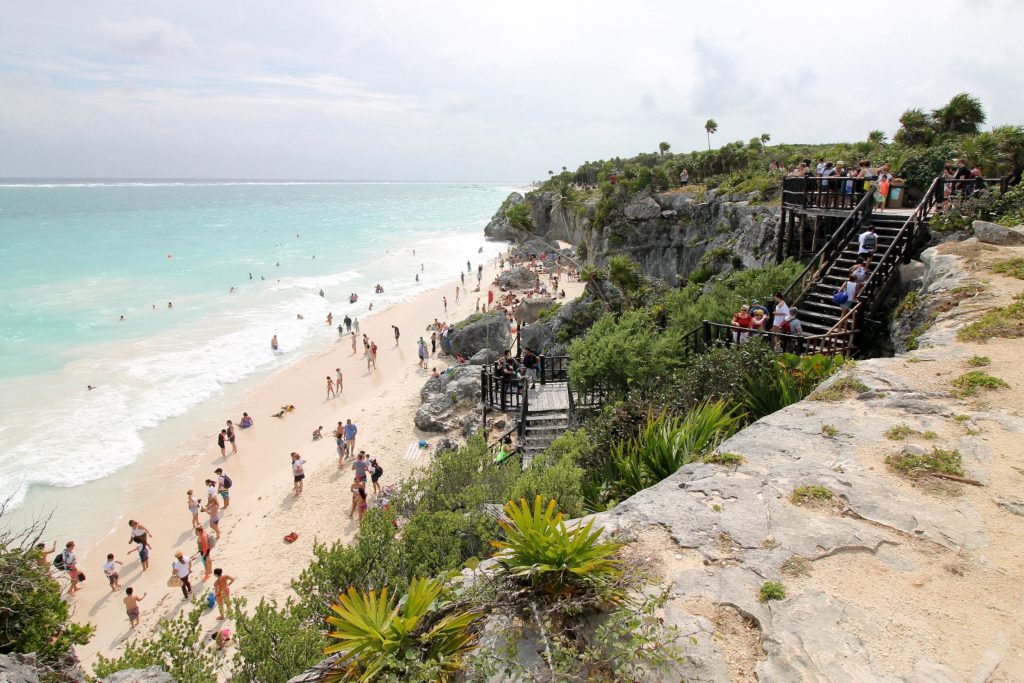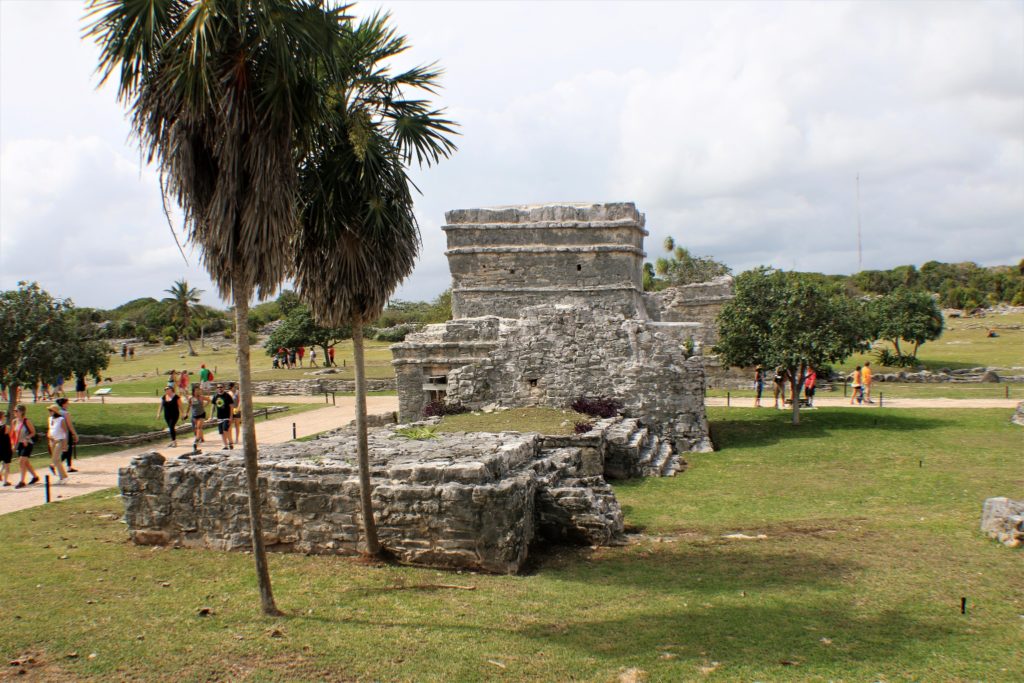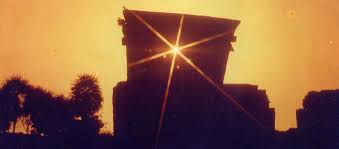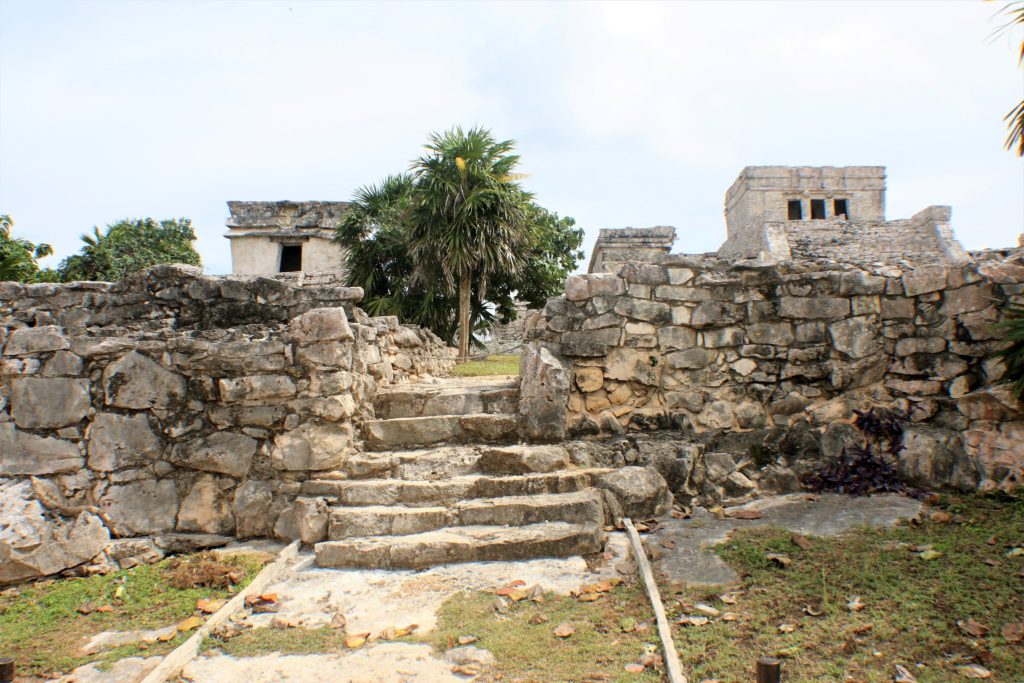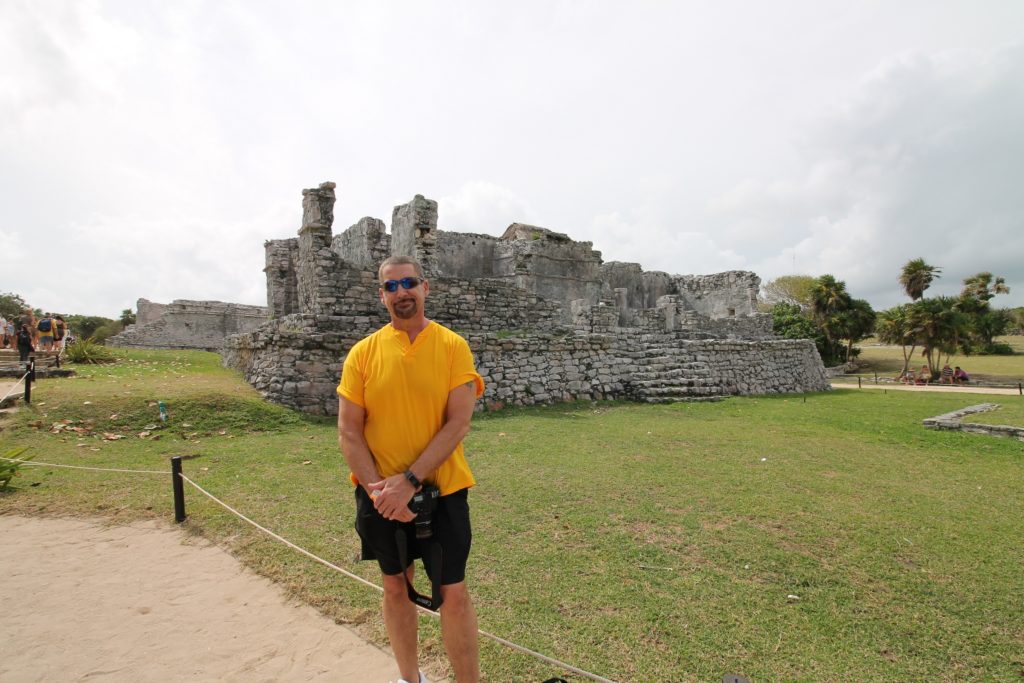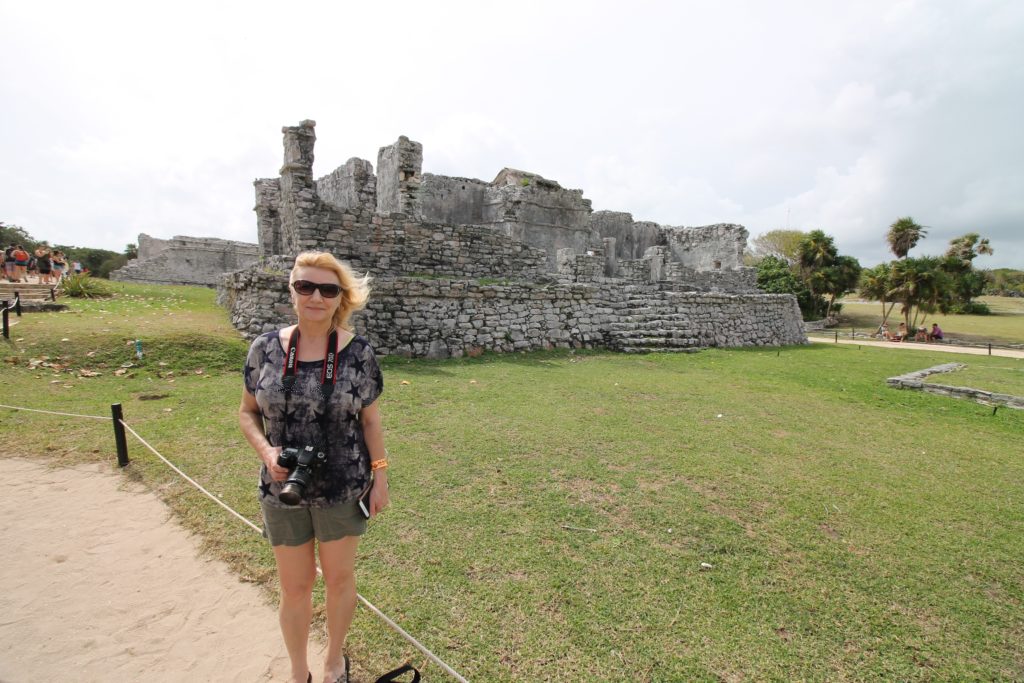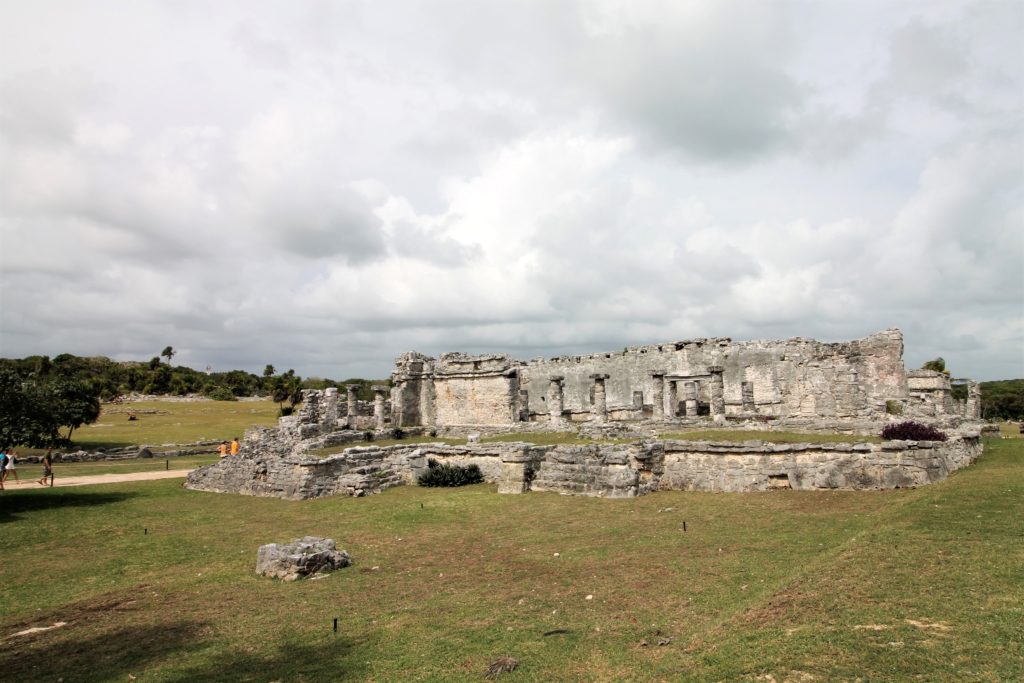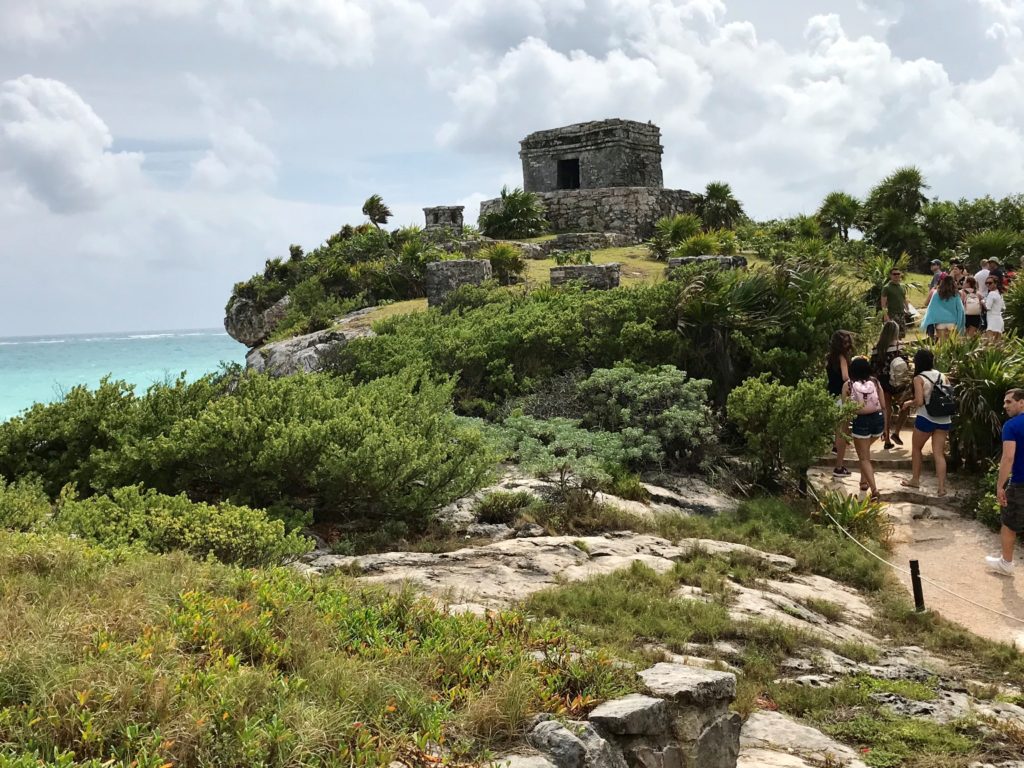
Visiting Tulum Ruins was in our activity list while staying in Playa del Carmen. Dave and I had a chance to explore Chichen Itza and Coba ruins during our previous Mexico visit. A mere 30 minute drive from Playa del Carmen, put us right in the heart of the quaint little city of Tulum. This stunning, ancient-walled city used to be home to around 6,000 Mayans between the 13th and 15th century. Spectacularly located on a cliff overlooking the turquoise waters of the Caribbean Sea, the Mayan ruins of Tulum are quite different from other archaeological sites in Mexico, which are located in a jungle.
Tulum used to be the Mayan door to the world. A seaport from where they traded their goods (it’s said to be mostly obsidian, turquoise and jade). This city is believed to have been one of the last built and inhabited by the Mayans. After the Spanish began settling in Mexico, Tulum was abandoned by the Mayans – probably after Spanish diseases began spreading among the population. The site structures remain surprisingly well preserved.
At the entrance, there is a craft market that boasts some local handcrafted goods, jewelry, and refreshments. From the craft market, there is about a mile walk to the Tulum Ruins, but there is an option to take a short little motorized train ride up. We preferred to ride the train in this heat.
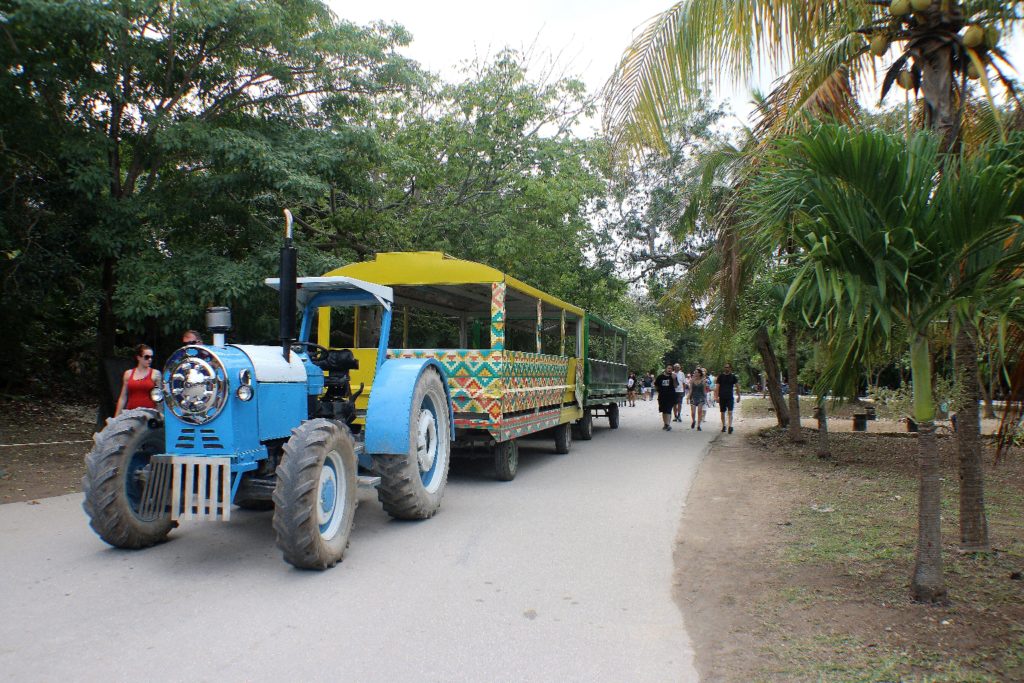
Tulum Ruins entrance. We bought our entrance tickets here, paid 70 pesos each.
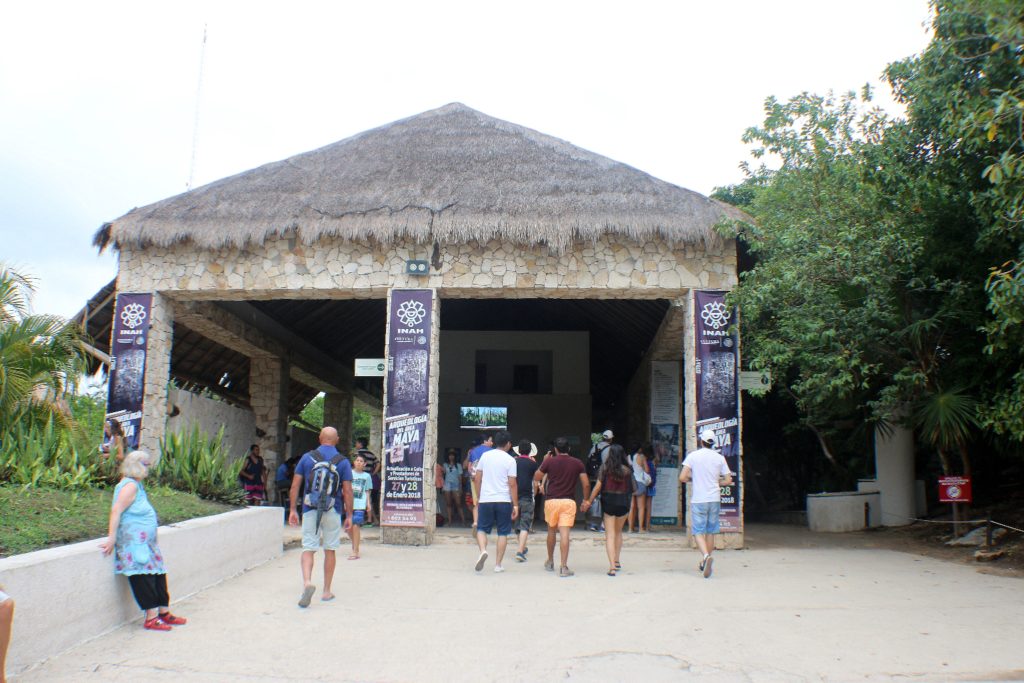
This Mayan site may formerly have been known by the name Zama, meaning City of Dawn, because it faces the sunrise. Tulúm is also the Yucatan Mayan word for fence, wall or trench. This is Northern door to the city, the original entrance, famous Mayan arch or false Arch. Tulum has 3 walls and the 4th wall is the sea with the second largest coral reef in the world. The town served as a major gateway for connecting the Yucatan Peninsula and the Gulf of Mexico with the Mayan people of Honduras and modern day Central America.
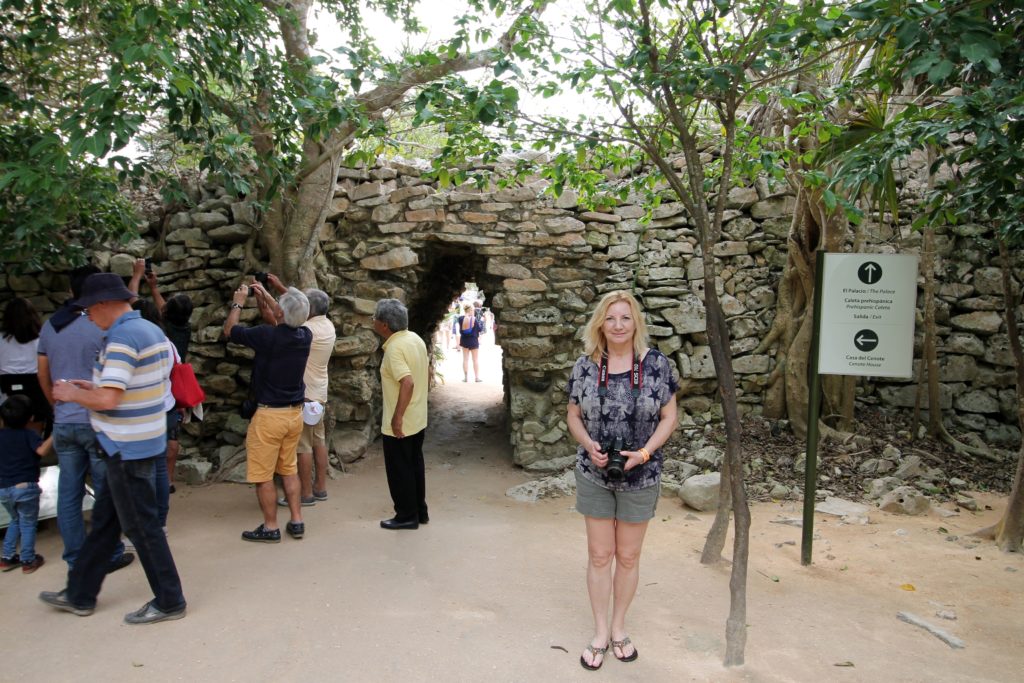
Right at the entrance we were greeted by this adorable creature, a white nosed coati-mundi.
The structures in this ancient pre-hispanic site are the buildings of the city’s main center, where ceremonial and political activities took place. Around this wall were a number of thatched wooden houses that were homes to workers, but little evidence exists of these residential homes. There are three major structures of interest at the Tulum site: El Castillo, the Temple of the Frescoes, and the Temple of the Descending God. Here is the Tulum Ruins map as a reference.
The moment you step into the Tulum Ruins, there is a solemn silence that’s hard to explain. Despite the presence of modern crowds, the vibrations of a once thriving, now vanished civilization are in the air.
The House of Cenote was the first structure we came across at Tulum ruins. This building was a house that was built on limestone. It was extended with a room placed directly over a cenote. Bones were found here too, so it may also have been used as a crypt.
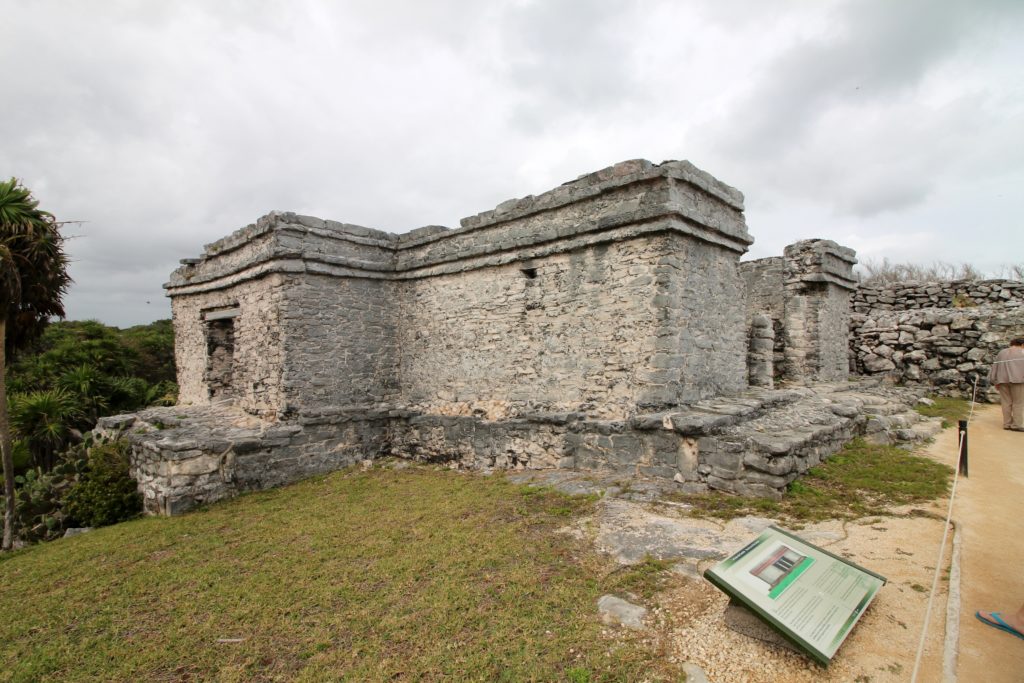
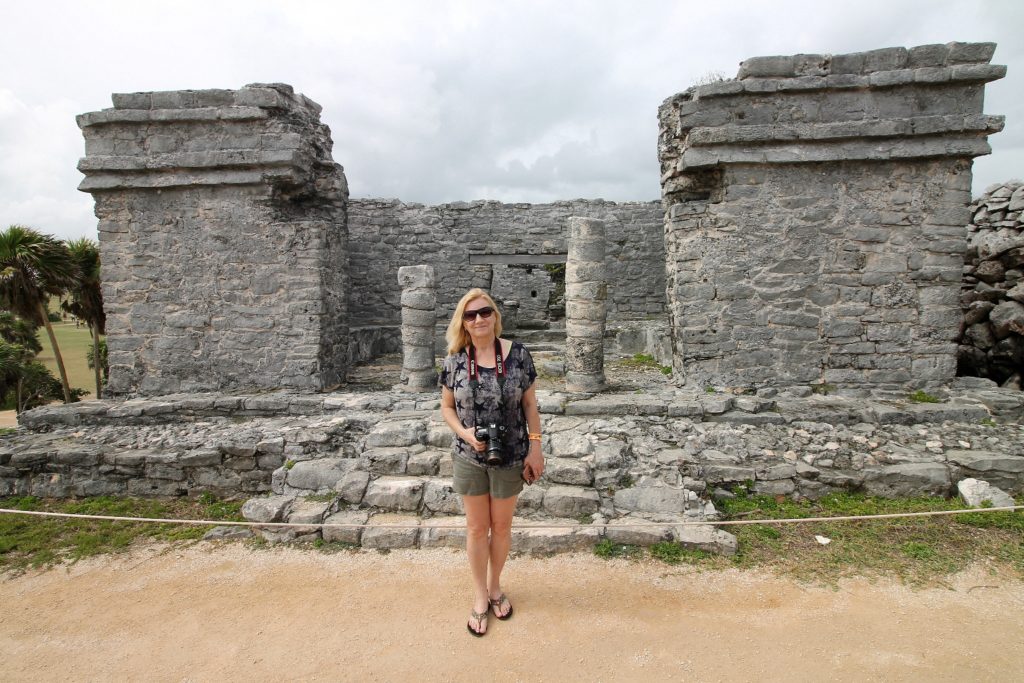
Dave’s first try at taking 360 Panoramic photos. I really like it! To navigate 360 view, start the video, then click and drag inside the video.
Then, we proceeded to the Temple of the Wind God (Templo Del Dios Del Viento) named for its round base. Traditionally, the god of the wind, Ehécatl from Central Mexico, was related to Kukulcán.
The Castle (El Castillo) is the most imposing building of the ruins of Tulum and over more than 500 years ago it must have been even more spectacular. This set above the cliff castle, with its sculptures and a brightly painted facade, has two small temples where offerings were left and it used to be a religious place for the Mayans. Located closest to the sea, El Castillo was used as a lighthouse for sailors and served as a navigational signal to the large cargo canoes, that the Mayans used in their trading with other civilizations up and down the coast.
El Castillo overlooks the turquoise blue waters of the Caribbean Sea from the cliff. The beach below the castle was an important part of the Tulum settlement. This area is where Mayan ships, dedicated to trade around the Yucatan Peninsula, docked. Today visitors use this area as a place to swim, snorkel and rest.
Historical viewpoint. Looking out onto the sparkling Caribbean Sea from the ruins, you’ll notice a long, white “shelf” where the waves break, not too far from the shore. This divide in the surf is part of the Great Maya Reef, second in size to Australia’s Great Barrier Reef and stretching in length to over 600 miles.
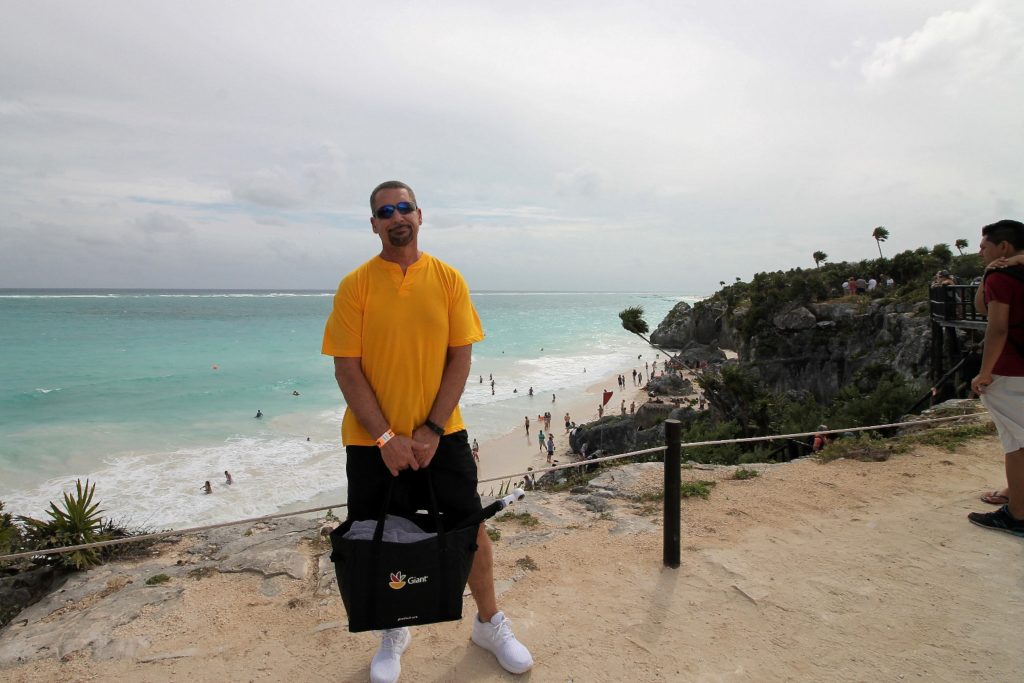
The Temple of the Winds at the ancient Mesoamerican site of Tulum, Mexico. Iguana that is sitting on the front left stone blends in very well, doesn’t it?
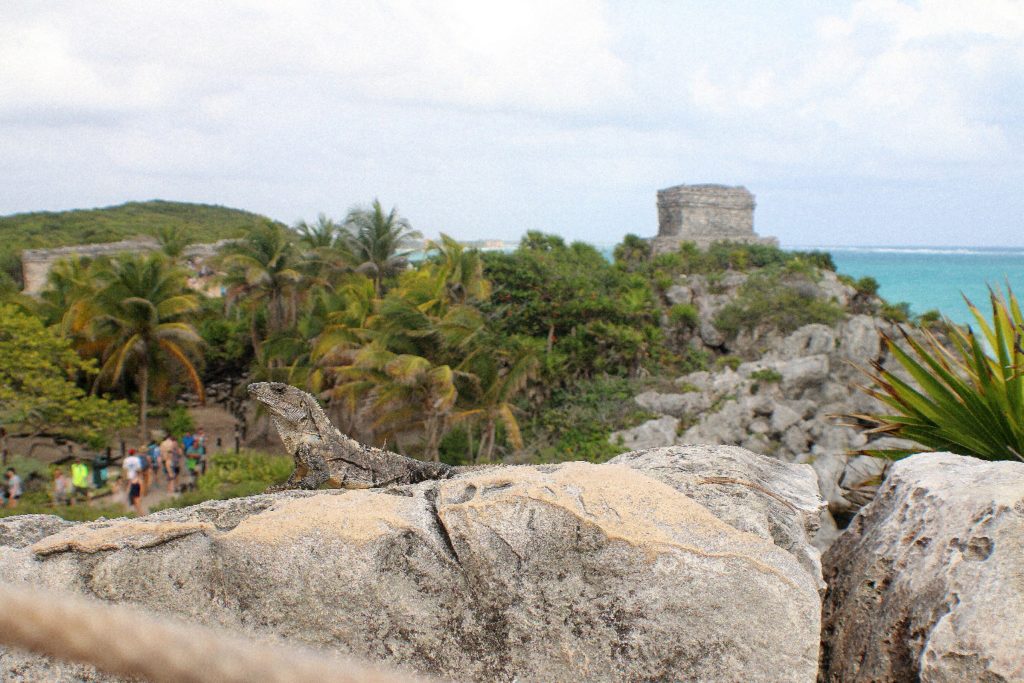
Lush tropical greenery with breathtaking views of the Caribbean and Temple of the Wind in the background. Can’t beat this view!
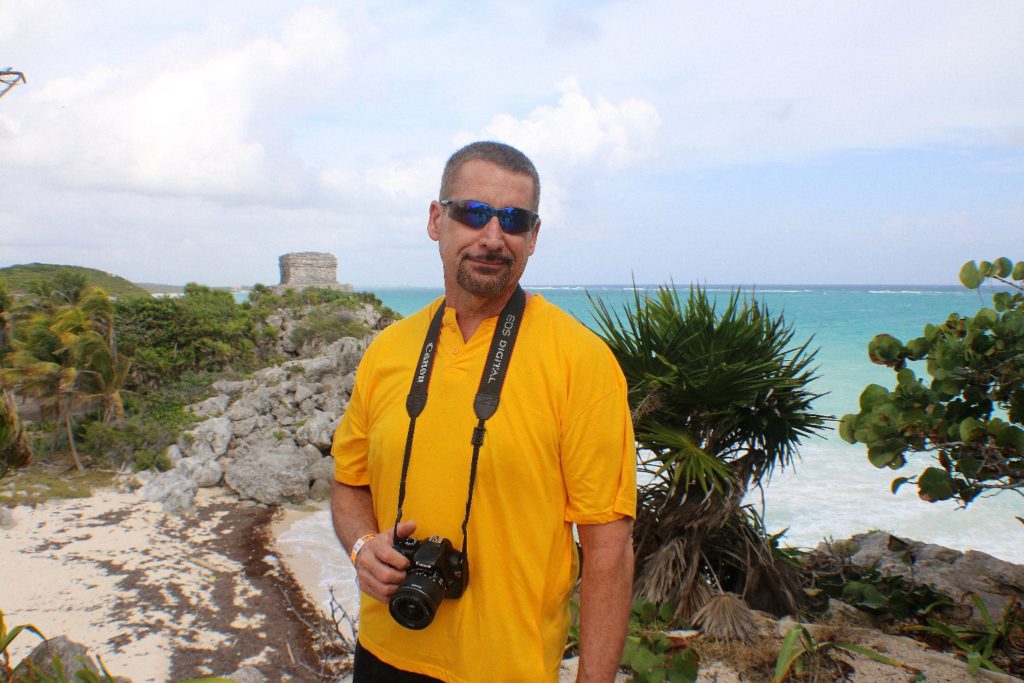
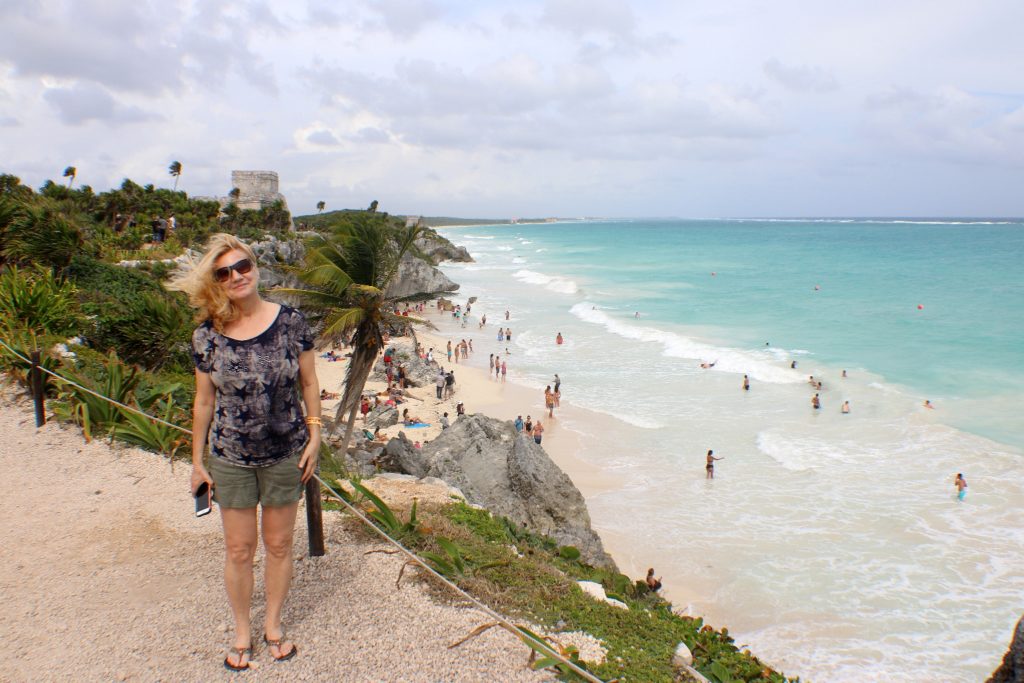
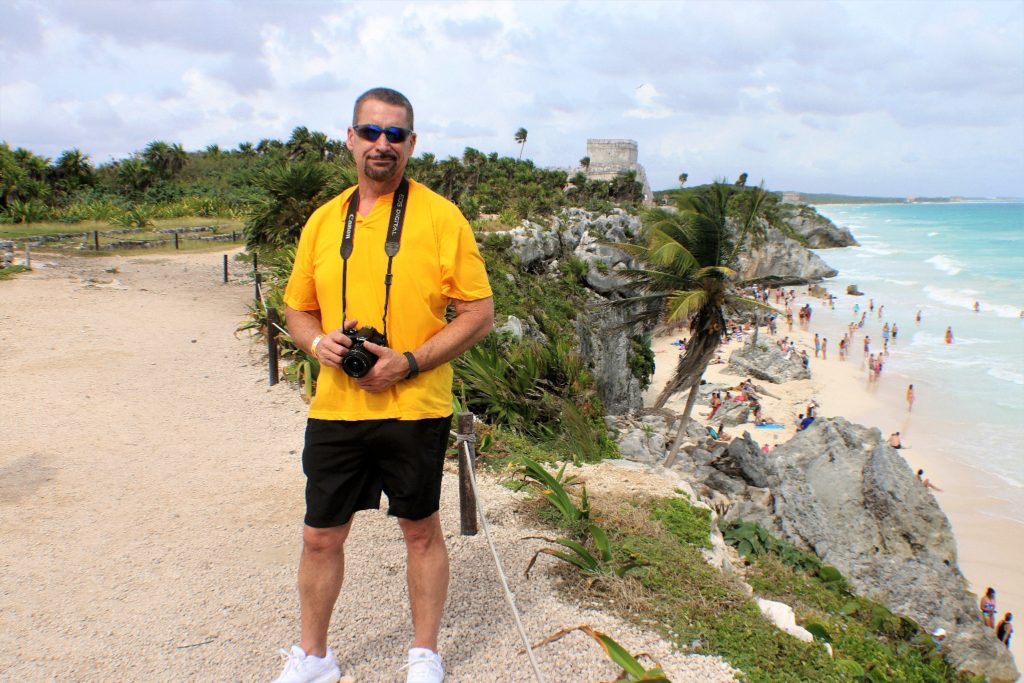
Temple of the Frescos (Templo de las Pinturas) directly in front of the Castillo was used as an observatory for tracking the movements of the sun. Its decoration was among the most elaborate at Tulum and include relief masks and colored murals on an inner wall. Entrance to the temple is no longer permitted.
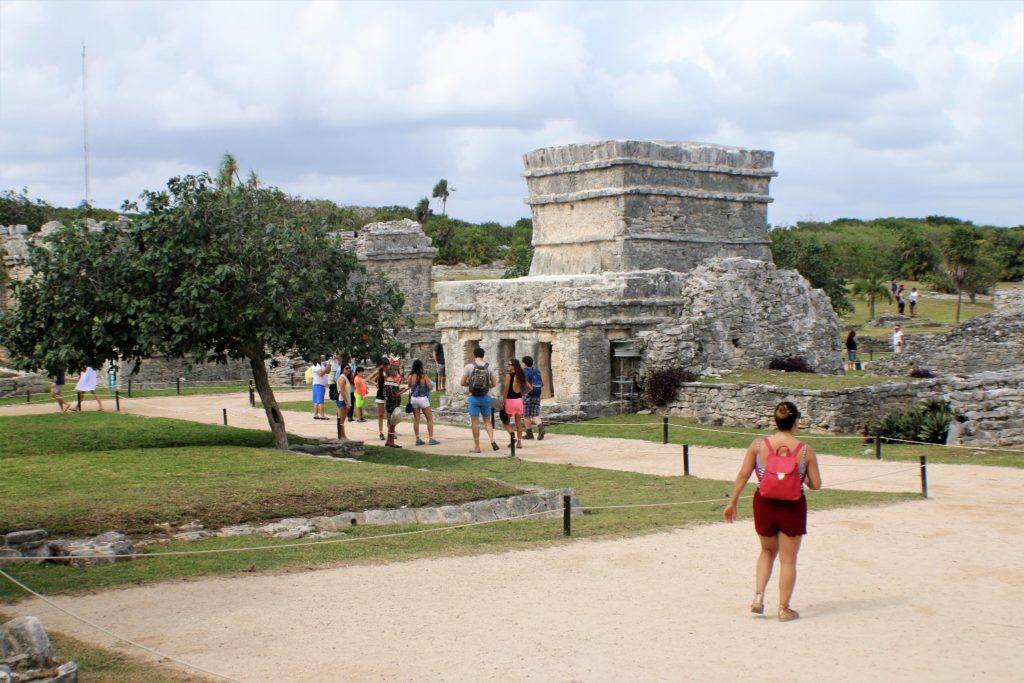
The Temple of the Frescoes includes a lower gallery and a smaller second story gallery.
Off to the side of El Castillo is the Temple of the Descending God. Above the entrance in the western wall is a figure sculpted with its head pointing down, the descending god. It is still preserved, giving the temple its name. The frequency of this image throughout several ruin sights indicates that the story of a Descending God was so significant to the Mayans that it was taught throughout the land.
This temple was built in alignment with the morning star, the planet Venus and the sun. The sun rises exactly through the temple on the summer solstice, the longest day of the year. This is very Mayan, as they were obsessed with the movements of the heavens and learned to mathematically predict almost every astronomical event. They developed stunningly accurate versions of the calendar thousands of years ago. These calculations led to much speculation as to just what might happen when the calendar ended. This image from the web depicts a view during summer solstice.
We observed a much less dramatic view of the Temple of Descending God.
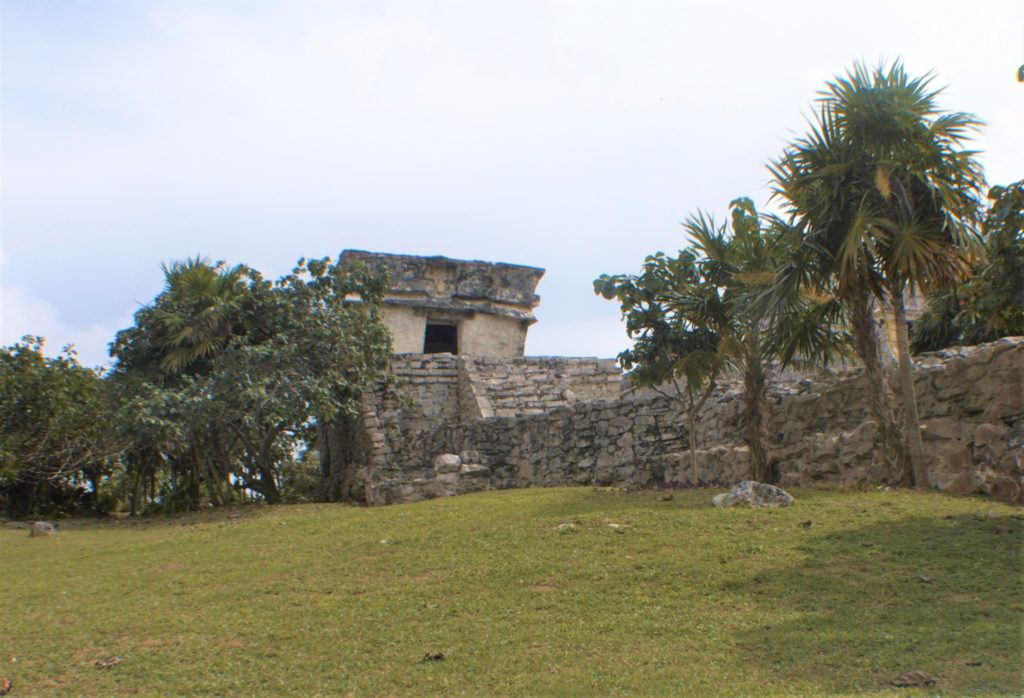
These structures are a part of the City Square bordered by El Castillo to the west.
El Palacio (The Palace). The most important people in Tulum lived in this building. It consists of several large rooms with benches along the walls. In the back there is a sanctuary where religious ceremonies were also performed.
The House of the Columns is more complex than most structures at the site. It’s a palace-like structure with four rooms whose principal entrance faces South. Six columns support the roof of the main room and top sanctuary.
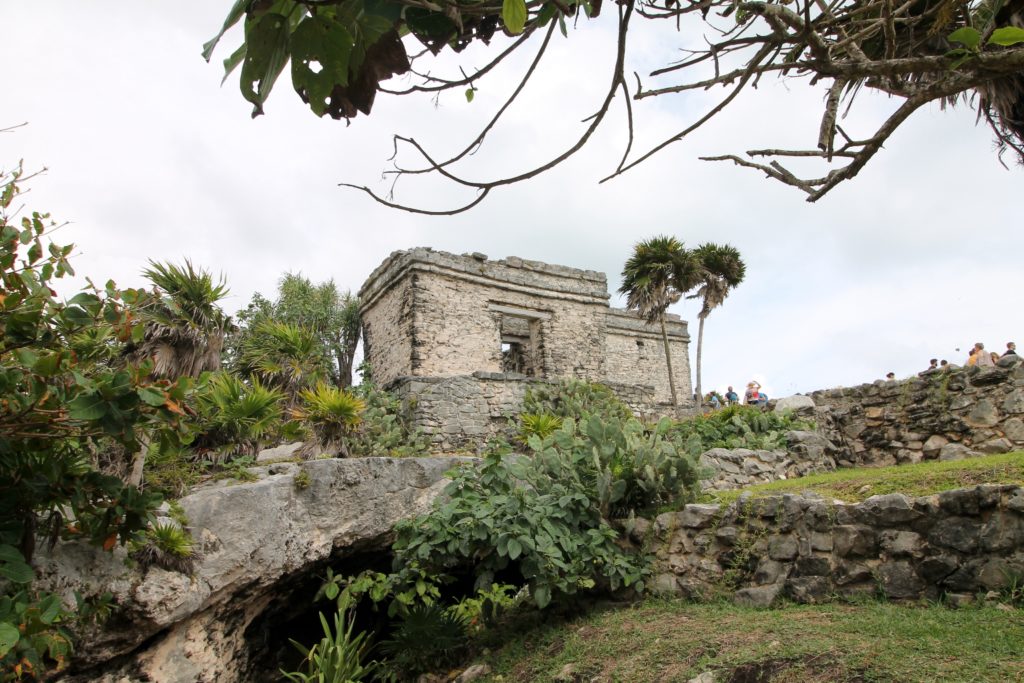
There are temples, living quarters, and other buildings that were once home to more than a thousand Mayans.
Here are the main “citizens” of Tulum Ruins, iguanas. We could spot them sunbathing across the grounds quite a bit.
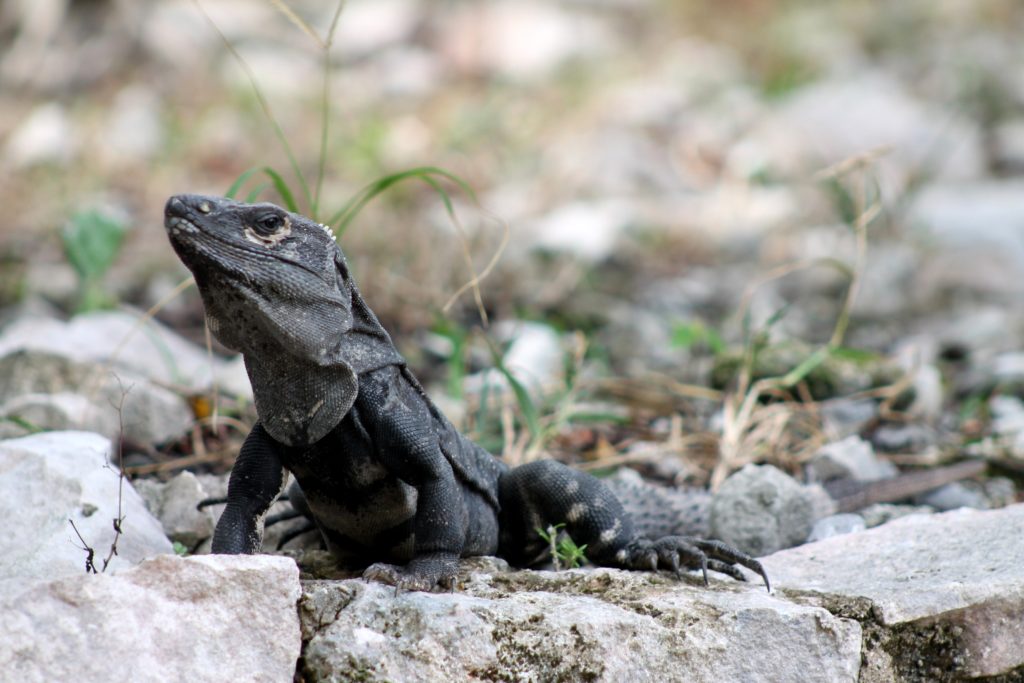
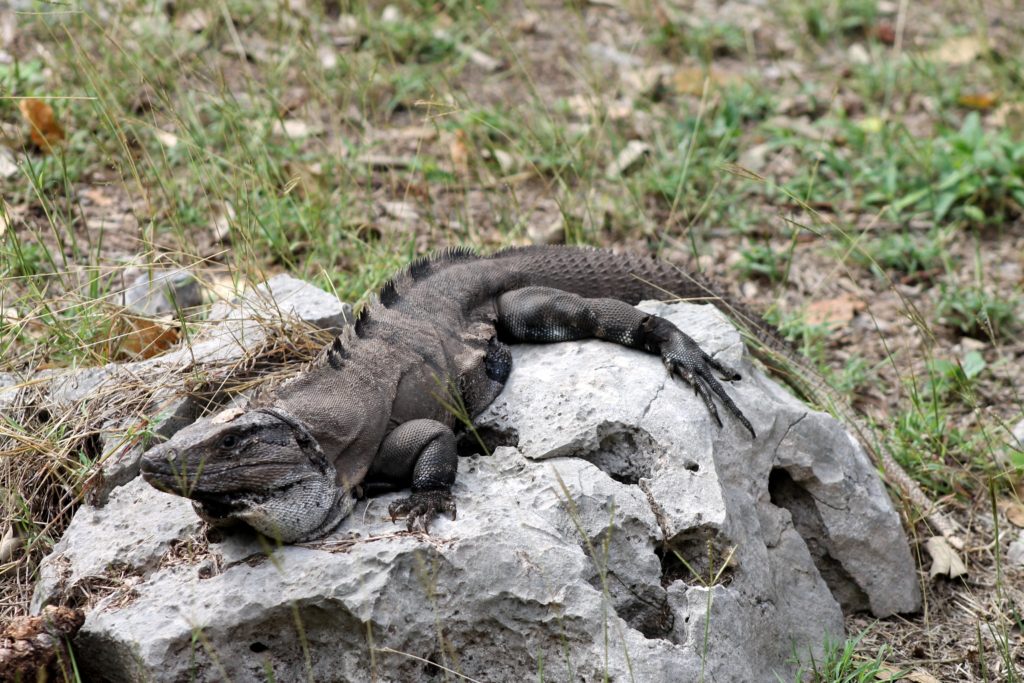
Walking through the craft market on our way back to our car. This is also the place to catch the tractor train.
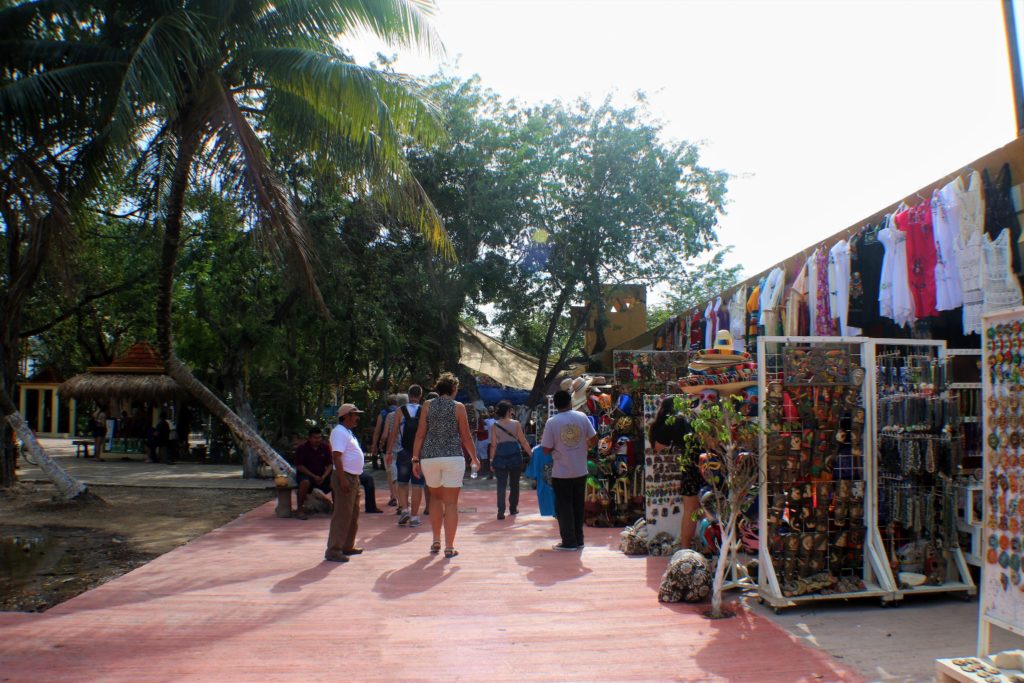
Here is a short video of our visit to the spectacular Tulum archeological site.
